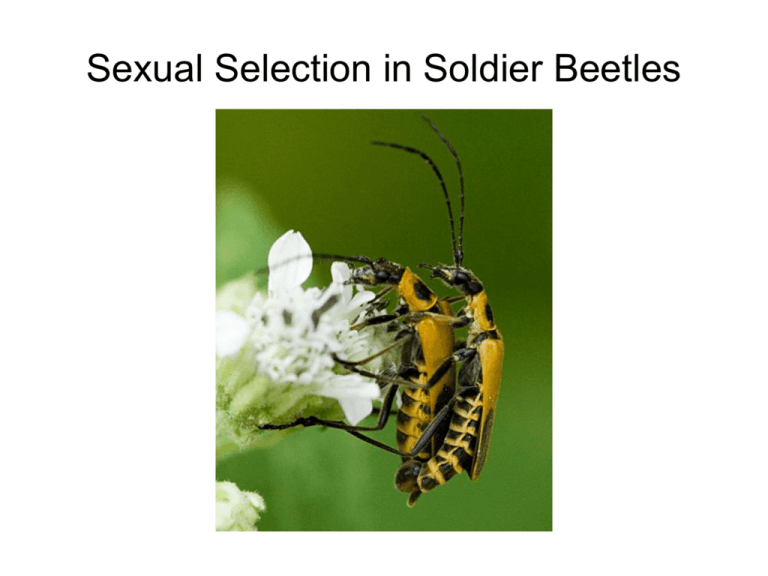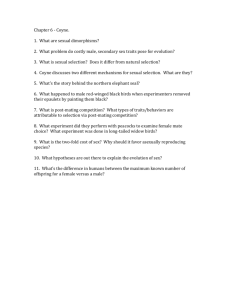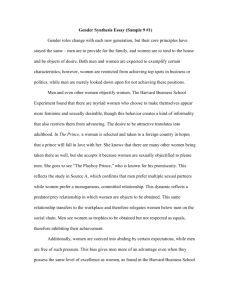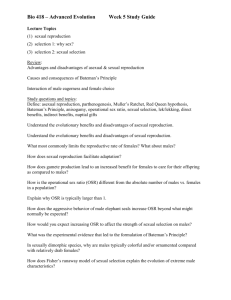Sexual Selection in Soldier Beetles
advertisement

Sexual Selection in Soldier Beetles Sexual Selection • Characterized by… – A difference in the reproductive success of individuals of the same sex • Hypothesized to influence… – Development of ornamental/showy traits – These traits may reduce an individual’s survival, but increase their chance of reproducing Hypotheses for Sexual Selection • Male-Male Competition: Hypotheses for Sexual Selection • Female Choice: – Good Genes Hypothesis – Runaway Selection RUNAWAY SEXUAL SELECTION RUNAWAY SEXUAL SELECTION RUNAWAY SEXUAL SELECTION RUNAWAY SEXUAL SELECTION RUNAWAY SEXUAL SELECTION Today’s Agenda • Look for evidence of sexual selection on body size in soldier beetles – Measure body length of mated and unmated males and females Soldier Beetles • Males vs. Females – Size – Abdomen striations Hypotheses • Sexual selection on males: – HO: There is no difference between the sizes of mated and unmated males – HA: Mated males are larger than unmated males Hypotheses • Sexual selection on females: – HO: There is no difference between the sizes of mated and unmated females – HA: Mated females are larger than unmated females Hypotheses • Relationship between male and female size: – HO: There is no relationship between the sizes of mated male and female beetles – HA: Larger females mate with larger males and smaller females mate with smaller males Methods • Collect mating and nonmating pairs – NOTE: keep each mated pair in an individual vial – NOTE: Put all nonmating males in one vial and all nonmating females in a second vial • Measure body length using calipers • Write down observations of beetle behavior • Release the beetles at the end of lab – NOTE: keep the beetles out of the sun while you are collecting/measuring other individuals Data Analysis • Pick one hypothesis about sexual selection • Compare the average size of mating and nonmating individuals (either male or female) • Evaluate the relationship between male and female size Data Analysis • Comparing body size: – Calculate the mean body size for paired and unpaired individuals – Calculate confidence intervals for each mean – If the confidence intervals do not overlap, then the means are significantly different from each other at p=0.05 – Create a bar graph showing the mean body size of paired and unpaired individuals Data Analysis • Comparing body size: Data Analysis • Comparing male and female sizes: – Create a scatter plot showing the relationship between paired male and female body sizes – Use ALL of the data points – Female size should be on the x-axis – Male size should be on the y-axis Data Analysis • Comparing male and female sizes: Lab Report • Clearly state your hypothesis • Write a 1-page mini-discussion about whether your results support your hypothesis • Cite at least 1 scientific article • Include the appropriate figures







